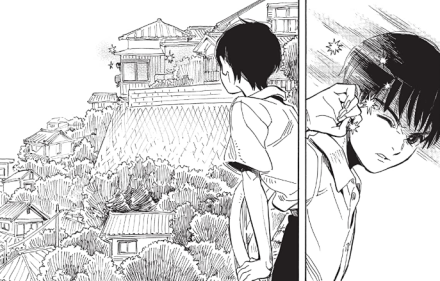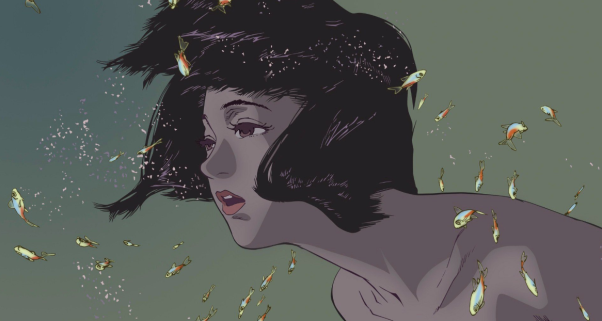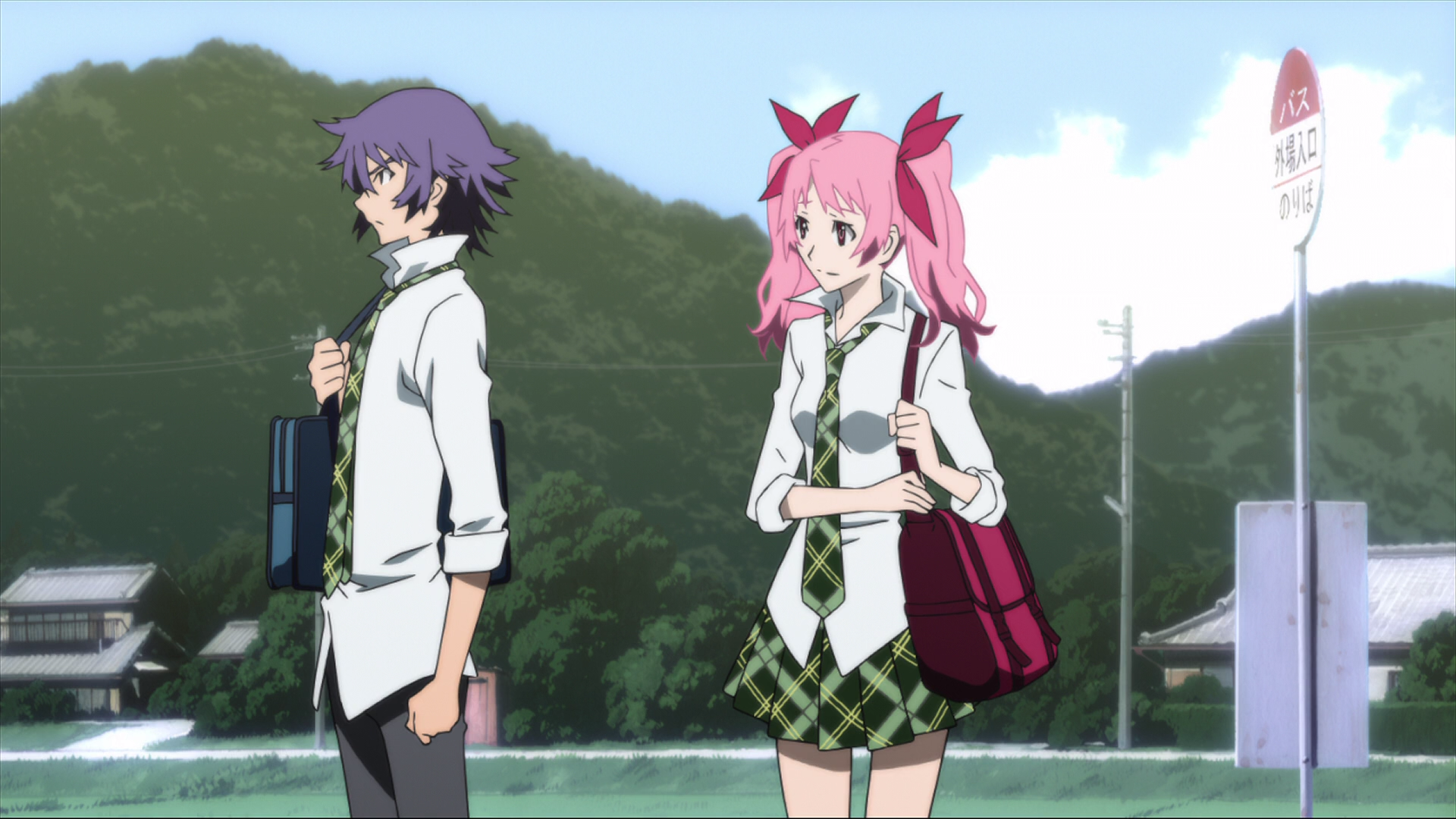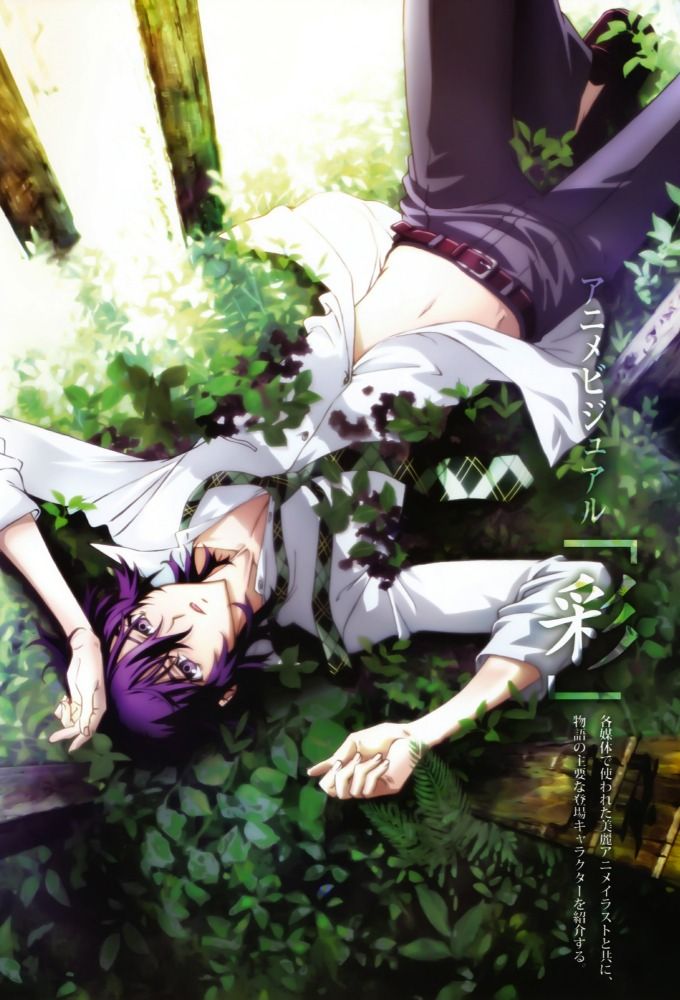First impressions for volume 1 of the manga series “Shimanami Tasogare” or “Our Dreams at Dusk,” story and art by Yuhki Kamatani, and licensed in English by Seven Seas Entertainment. Minor spoilers will be present.
“My Life Probably Ended That Day”
As the new kid, high schooler Tasuku Kanama was able to slip by his first semester thanks to having friends in the table tennis club. But, his world quickly starts spiraling out of control when the other kids find out that he may be gay. Teased and outed for being found with gay porn on his phone, Tasuku prepares to commit suicide when he sees another woman off in the distance jump off a cliff. Panicked and startled beyond belief, what he find upon rushing to the sight of her fall was not what he expected . . .
At the peek of this steep countryside hill, Tasuku finds a “drop-in center” with a lounge open to all who enter. The people there are unusually friendly, but what catches Tasuku’s eye first is seeing woman who jumped off the cliff there, completely unharmed from her fall. The others introduce her as “Someone-san,” and remark how although she’s mysterious and keeps to herself, she is in fact the owner of this fine communal establishment.
Drawn to her presence, Someone-san offers him an ear only if he is willing to talk about his problems. Through speaking to her and reflecting on his own actions, Tasuku realizes that what hurts the most is his own inability to accept his sexuality. An emotional introduction to a much larger story, Our Dreams at Dusk follows Tasuku and all the other gay, lesbian, bisexual, and transgender people he encounters as he tries to come to terms with his sexuality.

“Why am I Like This . . . ?”
This first volume does a beautiful job at illustrating Tasuku’s pain and anguish as a closeted gay kid. Anyone who’s ever been in his shoes know the frustrations of having to hid their sexuality from others. Whether to parents, friends, or even simple acquaintances, it doesn’t matter—in a society that shuns the notion of being gay, coming out can be the most relieving OR excruciatingly painful thing, and Tasuku knows this. He’s constantly weighing the relationships he’ll have to give up in order to gain what he wants, and it’s that toxic mindset that haunts Tasuku day-in and day-out.
Tasuku is gay, no doubt about it. He’s in love with a classmate on the volleyball team, or so we are led to believe in this first volume. I’m sure we’ll get more on this in the next volume. Until then, we just have Tasuku and his new friends at the drop-in center. We don’t know much about them either, except for Daichi Haruko, a young outgoing woman who greets Tasuku everyday with a smile. She invites him on her non-profit work, which involves tearing down dilapidated buildings and renovating them for the city.
He likes working out in the summer sun, and he likes Haruko, too. But what throws him into a bit of shock is finding out that she’s a lesbian. Not only that, but Haruko also has plans to marry her girlfriend, a kind gal named Saki, whom he meets one day during their outdoor work. I loved hearing Haruko’s story, especially how she left her old job and moved out to the countryside where she met Someone-san (and eventually created the drop-in center we know today). The place really is special, even down to its foundation.

“There’s a Guy I Like”
Yuhki Kamatani’s Our Dreams at Dusk is a highly expressive and emotional read. This first volume demonstrate’s Kamatani’s strong art style, including her stark use of black in blocking out spaces, using a warped lens view and dramatic lighting for effect, and emphasizing the power of eye contact. Eyes can tell a lot about people, and Kamatani uses strong gazes like such to convey mood and inner turmoil.
Kamatani’s panel construction is also genius; sounds, textures, and feelings carry from panel to panel seamlessly, as if this were a movie printed onto the page. The story moves, even in pages where there is no dialogue. Sometimes the most fantastic or simplest of gestures can be enhanced by the absence of dialogue, like when Tasuku daydreams about touching another man’s face. Even in silence, Kamatani’s magical realism invites supernatural imagery to convey intriguing feelings and ideas (like the sparks that fly whenever Someone-san leaps into the air). These really are some of the most impactful and striking images I’ve ever seen in a queer drama manga!
This is going to be a thought-provoking, psychological read—I can already tell. Looking at Tasuku, I am reminded of the same kind of self-torment that plagues Shinji Ikari of Evangelion fame (the two also look similar). Volume one alone is full of serious meditation and self-reflection, highlighting the importance of inclusivity with Tasuku finding the drop-in center and Haruko extending her job invitation to him. Where the story goes from here, I have no idea. But, I already know for a fact that Tasuku’s coming out will bring with it a powerful coming-of-age tale.

I’m a kid. I’m not brave. I’m always confused. But I felt pretty glad that I didn’t kill myself. I felt that at Someone-san’s drop-in center . . . as the heat of August scorched me. — Tasuku Kaname
Afterword
It’s a shame I didn’t get my rear in gear during the first week of June. Otherwise, I would have been able to provide for you a full series review of Shimanami Tasogare today instead of just a first impressions post. If and when I get around to writing that full review, I hope you will come back to see how my thoughts on this fantastic series have changed. Should my hunch prove correct, I definitely think Yuhki Kamatani’s Our Dreams at Dusk is a masterpiece in the making. Again, I’ll be able to confirm that later, but I DO have the other three volumes and plan on reading them ASAP! I’d love to hear your thoughts on these gorgeous publications, too—just no spoilers, please!
Well there you have it, friends. My Pride Month celebration has officially concluded with the publishing of this post. It’s been an absolutely incredible month full of amazing reads, and I’ve learned so much through reading all these different stories. I WILL be writing a follow-up post (and filming a video!) wrapping up all of June’s Pride reads and watches, so stay tuned for my proper reflections with that. Thanks for reading—it was a sprint to the finish, but we did it! Haha! ‘Till next time!
– Takuto

















































